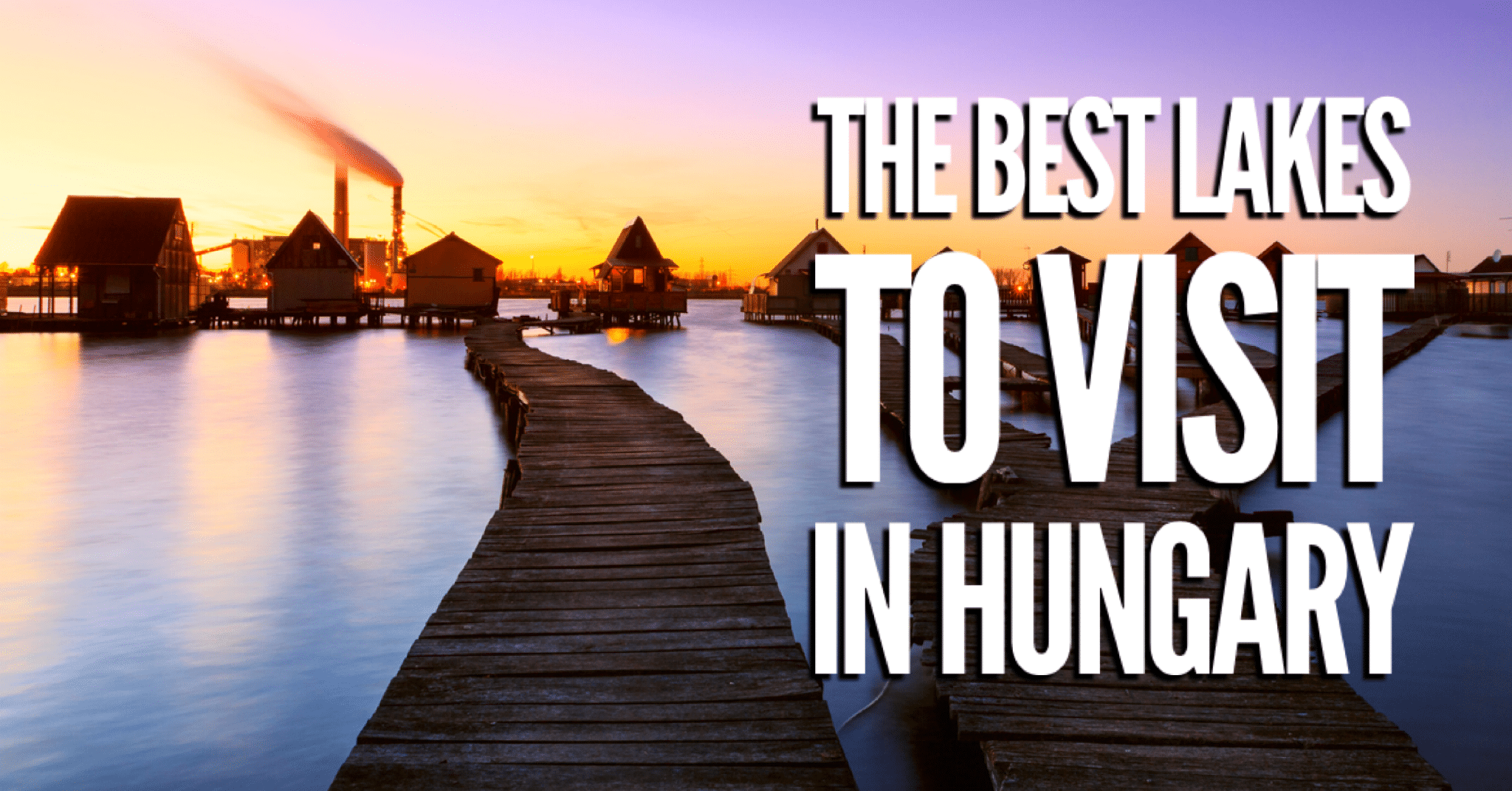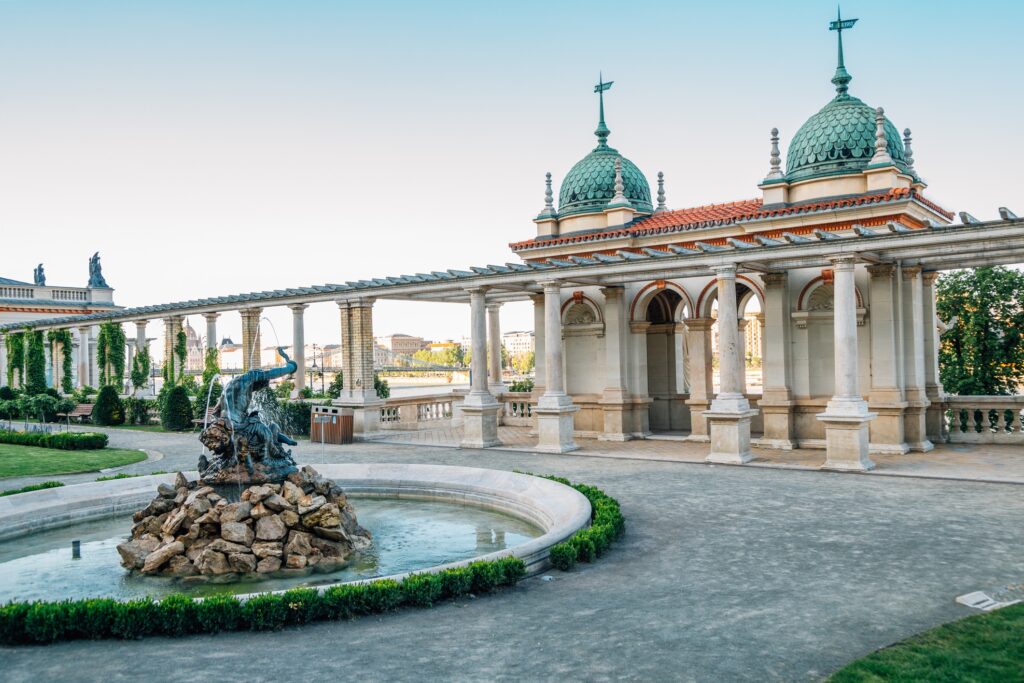Hungary is rich in natural heritage, and there are plenty of beautiful lakesides to visit at any time of the year. The country houses the largest thermal water cave system in the world as well as the largest natural grasslands in Europe, and its landscape would be incomplete without the stunning lakes.
Lake Bokodi
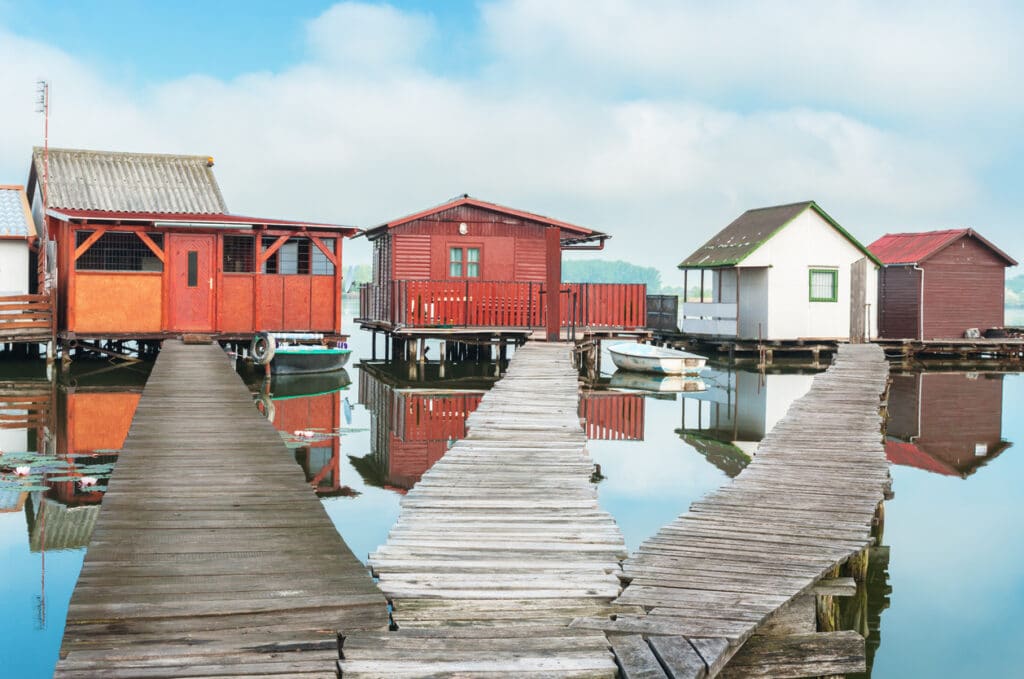
Lake Bokodi offers an interesting site for visitors, as the cooling pond houses the popular tourist attraction, the Bokod Floating Houses. As the lake is used as the local power plant’s cooling pond, it never freezes, therefore the tiny stilt village is built on the water. The lake and the floating village became a beloved attraction back in 2014, when the popular search engine, Bing, used a moody photo of the misty cabins as their cover photo. Before this, only the locals and dedicated fishermen were aware of the picturesque spot.
Tarn of Megyer-hegy
The Tarn of Megyer-hegy is situated in Borsod-Abaúj-Zemplén county. It is an attractive hiking and climbing spot as it is surrounded by large cliffs and can only be reached on foot. Its hiddenness and secluded location add to its charm and make it a popular tourist destination. The artificial lake once functioned as a quarry, and now offers one of the most gorgeous views in the entire region.
Tarn of Jósvafő
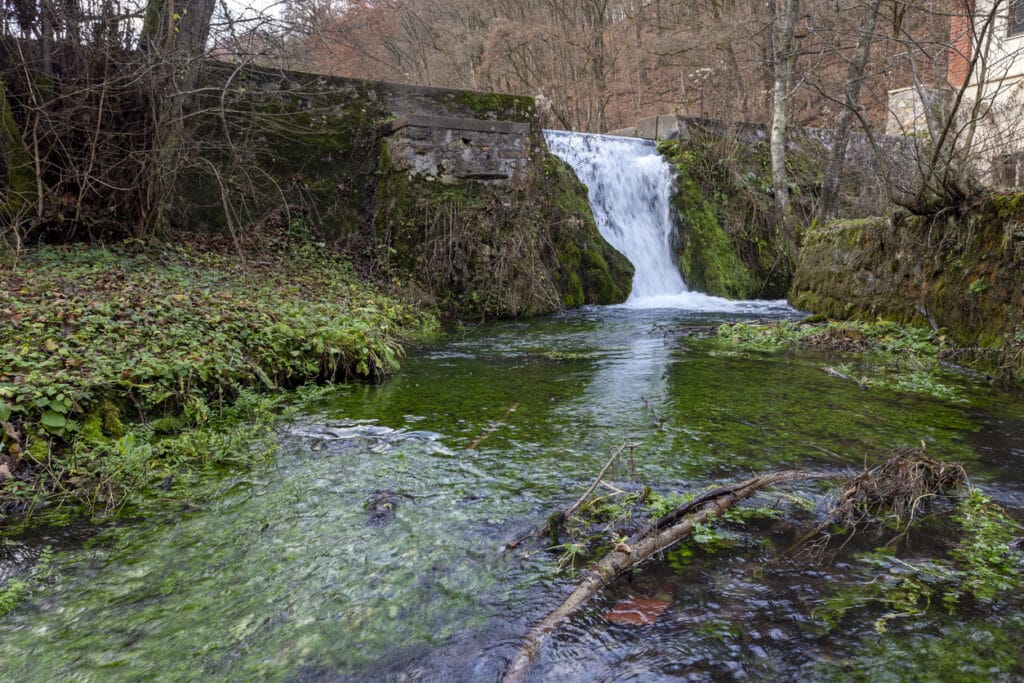
Hidden in Jósvafő village in the Aggtelek National Park, the Tarn of Jósvafő is a beautiful turquoise lake surrounded by trees and forests. It is situated close to the Baradla cave, the largest stalactite cave in Hungary, so you get the chance to visit two unique spots in one day. The turquoise lake was created back in the 1930s from the spring in the same area. The spring has been used as a mill and a way to use hydroelectric power.
Lake Hévíz

Being the second-largest thermal lake in the world, Lake Hévíz is one of the most popular destinations for both domestic and international tourists. It is visited by people from all around the world for the lake’s healing properties. The Hévíz Spa is built around the lake to help visitors enjoy the benefits of the healing lake. The water temperature can reach 25 °C in the winter and 35-36 °C in the summer, as the water is constantly moving with warm water moving upwards to the surface. This movement helps to keep the lake warm while providing a special massaging effect to the human skin.
Lake Fertő
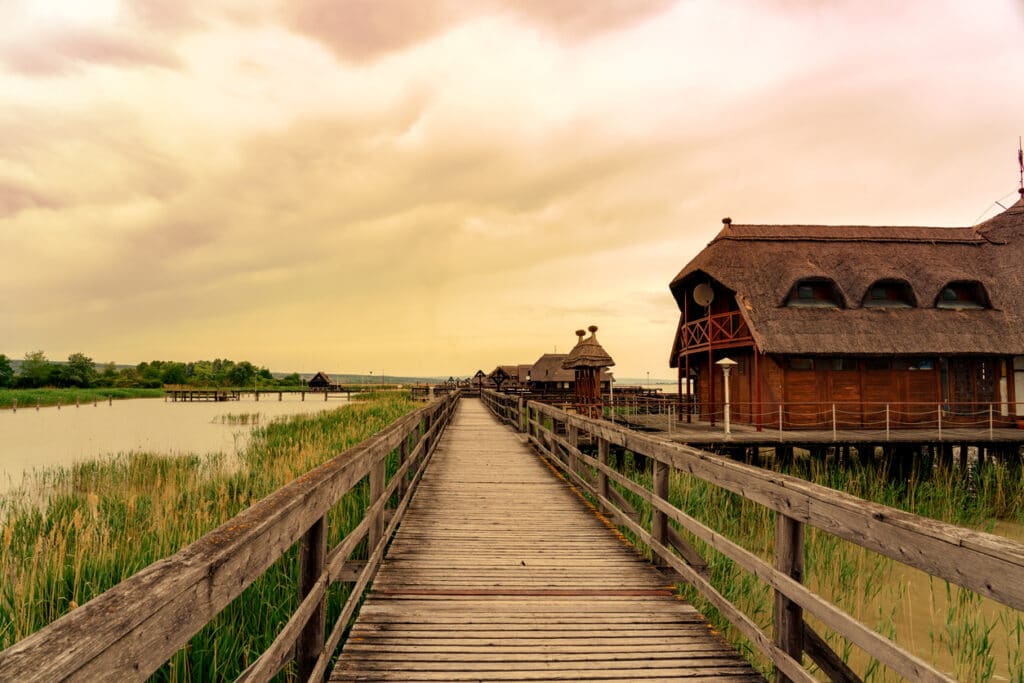
Lake Fertő is a shared gem between Hungary and neighbouring Austria. It is the biggest saltwater lake in Europe. The lake and its surroundings are a natural marvel with unique biodiversity and a scenic landscape. The lake is on the border of the two countries and is also bordered by two geological regions: the Little Hungarian Plain and the Sopron Mountains. The lake is Europe’s westernmost steppe lake, making it a unique home for some migratory birds, plants and other wildlife.
Lake Deseda
Lake Deseda located in a hidden corner in the north of Kaposvár is a lesser-known gem in the country. It was made by raising a dam in the 1970s for industrial utilisation. The lake is only 8 km long and is bordered by nature on one side and the city of Kaposvár on the other. On the lake’s peninsula, visitors can learn more about nature and the lake in the local arboretum, while cyclists can take a 17 km long track around the lake.
Lake Fehér
As part of the Kiskunság National Part, Lake Fehér is the largest saltwater lake located entirely in Hungary. The lake and the surrounding wildlife are carefully protected as it homes 300 different bird species and is a popular layover for many migratory birds in Europe. During the migration period, cranes, wild geese and teals are visible on the lake making it a perfect spot for bird and wildlife enthusiasts as well as nature photographers.
Lake Hámori

Lying among the mountains in Lilafüred, next to the castle-hotel, Lake Hámori has a unique atmosphere. The lake is surrounded by beautiful forests with misty treetops. Taking a boat tour on the emerald-coloured water gives an amazing view of the mountains in any season, while hikers can discover the valley by foot or bike. Lilafüred, the “Pearl of Bükk” is stunning in itself, but Lake Hámori is the cherry on top and a significant element in the region’s visual identity.
Vocabulary
| heritage | örökség |
| lakeside | tópart |
| thermal water | termálvíz |
| cave system | barlangrendszer |
| grassland | füves puszta |
| stunning | lenyűgöző |
| pond | kis tó, mesterséges tó |
| floating | lebegő |
| power plant | erőmű |
| stilt | cölöp, cölöpön álló |
| attraction | látványosság |
| moody | mélabús |
| misty | ködös |
| fisherman | halász, horgász |
| picturesque | festői |
| tarn | tengerszem |
| county | megye |
| cliff | szikla |
| hiddenness | rejtettség, eldugottság |
| secluded | félreeső |
| charm | báj |
| quarry | kőbánya |
| turquoise | türkiz |
| stalactite | cseppkő |
| spring | forrás |
| mill | malom |
| domestic | belföldi |
| healing | gyógyító |
| constantly | állandóan |
| surface | felszín |
| gem | drágakő |
| neighbouring | szomszédos |
| saltwater | sósvízi |
| marvel | csoda |
| Little Hungarian Plain | Kisalföld |
| steppe | sztyeppe |
| migratory birds | vándormadarak |
| lesser-known | kevésbé ismert |
| dam | gát |
| utilisation | hasznosítás |
| peninsula | félsziget |
| species | faj, fajok (állat) |
| layover | pihenőhely |
| crane | daru (madár) |
| wild goose | vadliba |
| teal | réce |
| treetop | fatető |
| valley | völgy |

